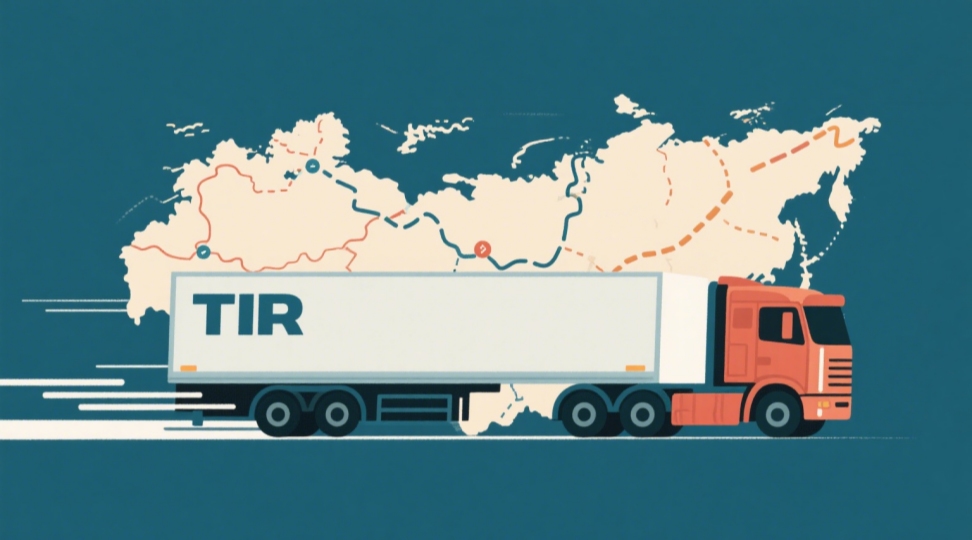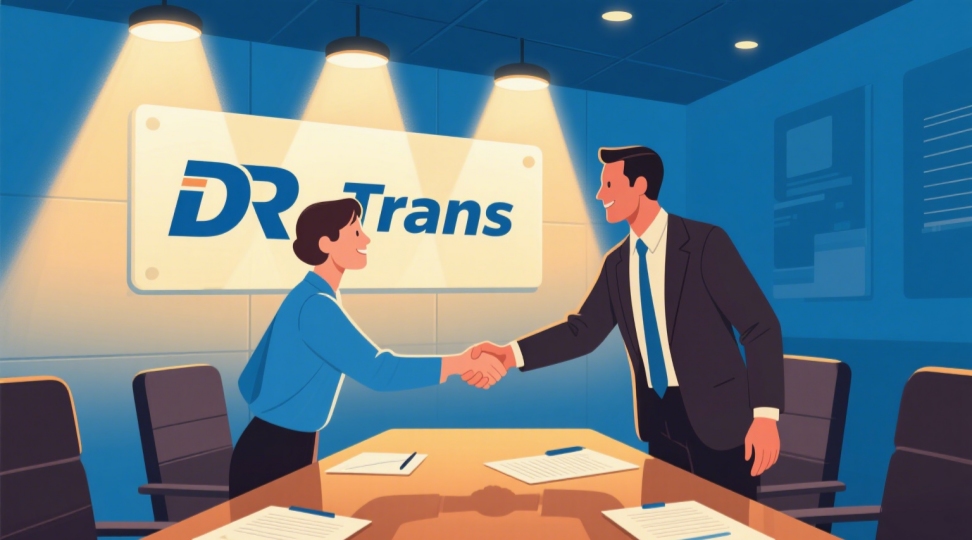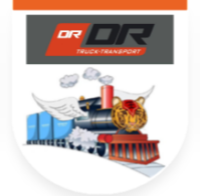Qu'est-ce qu'un 3PL ?
La logistique tierce partie (3PL) consiste à externaliser une partie de la chaîne d'approvisionnement et des opérations d'expédition d'une entreprise à des spécialistes externes. En pratique, Fournisseur 3PL gère des fonctions telles que le transport, l'entreposage et la distribution pour le compte des expéditeurs. Par exemple, Wikipédia définit le 3PL comme « l'engagement à long terme d'une organisation à externaliser ses services de distribution auprès d'entreprises logistiques tierces ». Autrement dit, une entreprise peut s'associer à un 3PL pour s'assurer que ses services sont bien gérés. gérer le fret et la logistique Au lieu de tout gérer en interne, les prestataires 3PL exploitent généralement des réseaux intégrés de fret et d'entreposage ; ils les utilisent pour adapter leurs services aux besoins de leurs clients. Concrètement, faire appel à un prestataire 3PL vous permet de vous concentrer sur votre cœur de métier tandis qu'un spécialiste gère les stocks, le transport et l'exécution des commandes. Les services courants incluent le transit de fret (par route, rail, air ou mer), la gestion des stocks, l'exécution des commandes, le dédouanement et même des tâches à valeur ajoutée comme l'emballage et l'étiquetage. Parce qu'ils coordonnent toutes ces activités logistiques, les prestataires 3PL sont souvent qualifiés de partenaires d'expédition ou de prestataires de services d'expédition « à guichet unique ».

Croissance et taille du marché des 3PL
Le secteur des prestataires logistiques de troisième ligne (3PL) a connu une croissance rapide avec l'essor du commerce mondial et du e-commerce. Par exemple, une étude de marché indique que marché mondial des 3PL atteint 1,17 billion de dollars en 2023Les principaux analystes prévoient que ce chiffre grimpera à environ 1,4 billion de dollars d'ici 2025 et continuent de croître à environ 8 à 10 % par an L'essor continu du commerce en ligne en est un moteur majeur : environ un tiers des expéditions 3PL sont aujourd'hui destinées au secteur de la vente au détail et du e-commerce. À l'échelle régionale, les données d'Armstrong & Associates montrent que le secteur 3PL américain représente environ 299,5 milliards de dollars en 2023, tandis que Asie-Pacifique (y compris la Chine) était d'environ 443,6 milliards de dollarsMême les marchés émergents connaissent une forte croissance : par exemple, les analystes estiment que le marché russe des 3PL atteindra des dizaines de milliards de dollars au milieu des années 2020, alimenté par la demande croissante du commerce électronique (voir notre article sur les principales plateformes de commerce électronique russes pour plus de détails). Au total, les projections indiquent que les revenus mondiaux des 3PL atteindront près de 1,5 à 1,9 billion de dollars d'ici 2030Cette croissance souligne l'importance de l'externalisation de la logistique. Les entreprises de toutes tailles font de plus en plus appel à des partenaires logistiques tiers pour atteindre efficacement de nouveaux marchés et se développer sans investissements importants. Comme le montrent les données, les coûts logistiques mondiaux (environ 10 à 11 % du PIB mondial) sont colossaux, et les prestataires logistiques tiers captent environ 10 à 12 % de ces dépenses en améliorant l'efficacité et la technologie.
Comment fonctionnent les entrepôts 3PL
Un élément clé de l'expédition 3PL est le réseau d'entrepôts. Entrepôt 3PL agit comme un centre de traitement flexible pour de multiples clients. Au lieu que les entreprises soient propriétaires et gestionnaires de leurs installations de stockage, elles externaliser la gestion des stocks et l'exécution des commandes à un partenaire 3PLLes entrepôts 3PL modernes sont hautement automatisés et technologiques. Ils utilisent des systèmes de gestion d'entrepôt (WMS) pour suivre les stocks en temps réel, optimiser l'espace de stockage et accélérer les opérations. Grâce au partage de l'infrastructure entre les clients, les 3PL réalisent des économies d'échelle. Un expert du secteur souligne qu'« un entrepôt 3PL fonctionne selon un modèle de paiement à l'utilisation, vous ne payez donc que pour l'espace et les services que vous utilisez ». Cela signifie que les détaillants évitent les coûts fixes comme les loyers et les salaires, et peuvent s'agrandir ou se réduire en fonction de la demande.
Logistique entrante : Les entrepôts 3PL reçoivent des marchandises des fabricants ou importent des marchandises. Ils inspectent, étiquettent et intègrent les articles à l'inventaire.
Stockage et inventaire : Les produits sont stockés sur des étagères ou dans des zones de stockage en vrac. Le suivi des stocks est numérique, permettant aux clients de consulter l'état des stocks via des portails en ligne.
Exécution des commandes : Lorsque les commandes arrivent, le prestataire logistique sélectionne et emballe les articles. Les prestataires logistiques tiers modernes optimisent les itinéraires de préparation de commandes et utilisent l'automatisation pour améliorer la rapidité et la précision.
Expédition sortante : Le prestataire logistique (3PL) organise le transport, par camion, train, avion ou mer, pour expédier les commandes aux clients ou aux détaillants. Il génère les connaissements, gère les itinéraires des transporteurs et peut même étiqueter les colis pour le e-commerce.
Services à valeur ajoutée : De nombreux 3PL proposent des services supplémentaires tels que l'assemblage léger (kitting), le reconditionnement, la logistique inverse (gestion des retours) et les contrôles qualité.

En regroupant ces fonctions sous un même toit, les entrepôts 3PL deviennent l'épine dorsale d'une chaîne d'approvisionnement externalisée. Cette intégration avec les services d'expédition permet une livraison plus rapide : les marchandises peuvent être acheminées sans délai de la réception au client. En résumé, un entrepôt 3PL offre une plateforme évolutive et rentable Pour l'exécution des commandes, les entreprises ont accès à des technologies de pointe (lecteurs de codes-barres, automatisation, suivi) sans avoir à les développer elles-mêmes.
Services fournis par les sociétés 3PL
Les entreprises de logistique tierces proposent une large gamme de services d'expédition. Elles gèrent essentiellement transport et expédition de fret — déplacer des marchandises par route, rail, air ou merUn prestataire logistique tiers peut réserver des expéditions de conteneurs de la Chine vers l'Europe, programmer des camions via le système TIR à travers l'Eurasie ou affréter du fret aérien pour des livraisons urgentes. De nombreux prestataires logistiques tiers font de la publicité. transport multimodal Des solutions combinant transport maritime, ferroviaire, routier et même aérien en un seul itinéraire. Cette flexibilité permet aux expéditeurs d'optimiser les coûts, la rapidité et la fiabilité selon leurs besoins.
Les principaux services d’un prestataire 3PL comprennent :
Gestion des transports : Coordonner le mouvement physique des marchandises. Cela comprend la réservation des transporteurs, la planification des itinéraires et le suivi des expéditions en temps réel. Les tiers négocient souvent de meilleurs tarifs de fret grâce à leur volume et à leur expertise. Ils gèrent les formalités administratives (connaissements, documents douaniers, etc.) afin que les marchandises puissent traverser les frontières en toute fluidité.
Entreposage et traitement des commandes : Comme indiqué précédemment, les prestataires logistiques tiers stockent les stocks dans leurs installations et traitent les commandes. Ils préparent, emballent et étiquettent les marchandises avant la livraison. Nombre d'entre eux exploitent des lignes de traitement des commandes spécialisées pour le e-commerce, les commandes B2C directes aux consommateurs ou les commandes groupées B2B. Ils peuvent également proposer des opérations à valeur ajoutée comme la mise en kit ou l'emballage spécial.
Gestion des stocks : Les prestataires logistiques tiers tiennent des registres de stock précis pour leurs clients. Ils alertent les entreprises en cas de rupture de stock et peuvent gérer les commandes de réapprovisionnement. Cela permet aux entreprises d'éviter les surstocks et les ruptures de stock. En effet, « les prestataires logistiques tiers fournissent des services incluant la gestion des stocks, l'entreposage et le traitement des commandes », permettant aux e-commerçants et aux fabricants de se développer sans gérer eux-mêmes ces processus.
Conformité douanière et commerciale : L'expédition internationale nécessite un dédouanement dans chaque pays. Un bon prestataire logistique gère les formulaires douaniers d'import/export, les droits, les taxes et les déclarations réglementaires. Il se tient au courant des réglementations commerciales afin d'éviter aux expéditeurs des retards ou des amendes.
Fret spécialisé : Les prestataires logistiques tiers gèrent souvent le transport de marchandises spécialisées. Par exemple, ils peuvent disposer de camions et d'entrepôts à température contrôlée (chaîne du froid) pour les produits alimentaires ou pharmaceutiques, ou d'équipements pour les matières dangereuses. Ils font également appel à des transporteurs spécialisés, comme des chargements complets (FTL) et des chargements partiels (LTL), en fonction de la taille des marchandises.
Technologie des transports : Les principaux prestataires logistiques tiers (3PL) proposent à leurs clients des outils technologiques, notamment des portails de suivi des expéditions, des notifications automatisées et des analyses des temps de transit. Grâce à l'intégration numérique, ils offrent une visibilité sur la chaîne d'approvisionnement. Par exemple, de nombreux 3PL proposent un suivi et des alertes en temps réel, améliorant ainsi l'expérience client.

En résumé, un prestataire logistique tiers peut être considéré comme une extension du service expédition d'une entreprise. Comme l'explique une source, les prestataires logistiques tiers « stockent, gèrent les stocks et exécutent les commandes ». et « Fournir des services de transport, gérer les mouvements de stocks » et coordonner les expéditions. Ils peuvent même conseiller sur l'emballage pour une meilleure utilisation de l'espace ou aider à optimiser les itinéraires de livraison. Compte tenu de l'étendue de ces services, un partenariat avec un prestataire logistique tiers est essentiel. regroupe de nombreux services d'expédition sous un même toitLes entreprises paient un fournisseur unique pour intégrer le transport, l’entreposage et l’exécution des commandes, ce qui se traduit souvent par une livraison plus rapide et un coût global inférieur.
Avez-vous besoin d’un fournisseur 3PL ?
Pour déterminer si votre entreprise a besoin d'un prestataire logistique tiers, il est essentiel d'évaluer vos défis logistiques. Voici quelques signes courants indiquant que l'externalisation pourrait vous être bénéfique :
Volume de commande rapide : Si vos ventes augmentent rapidement et que votre logistique interne ne parvient pas à suivre, un prestataire logistique tiers peut étendre ses opérations. Par exemple, Amazon constate que les entreprises qui peinent à gérer le volume de commandes ou à tenir leurs promesses de livraison se tournent souvent vers des prestataires logistiques tiers. Sans partenaire, vous risquez de manquer d'espace, de systèmes ou de personnel pour traiter efficacement les commandes.
Demande d'expédition plus rapide : Aujourd'hui, les clients attendent une livraison rapide et fiable. Si vous devez proposer une livraison express ou garantie, mais que vous ne souhaitez pas investir dans un réseau d'entrepôts national ou une flotte importante, un prestataire logistique peut vous aider. Un expert en logistique observe que le recours à un prestataire logistique permet à une entreprise de « proposer une livraison express, de tenir des promesses de livraison précises et de garantir une exécution rapide et fiable » afin d'améliorer l'expérience client.
Frais généraux élevés : Les entrepôts, les camions, les chariots élévateurs et le personnel logistique nécessitent un investissement important. Un prestataire logistique tiers (3PL) élimine une grande partie de ces dépenses d'investissement. En faisant appel à un 3PL, vous libérez du fonds de roulement, car il est propriétaire des camions et des entrepôts. Pour les entreprises souhaitant réduire leurs coûts fixes d'expédition et de stockage, le modèle de paiement à l'utilisation d'un 3PL est très attractif.
Pénétrer de nouveaux marchés : L'expansion internationale engendre de la complexité. Un prestataire logistique de portée mondiale peut simplifier la situation. Par exemple, vendre en Europe ou en Russie implique de nouvelles règles douanières, une nouvelle langue et de nouveaux réseaux de transport. Un partenaire logistique spécialisé possède déjà une expérience sur ces marchés. Il peut gérer les problématiques transfrontalières et les réglementations locales pour votre compte.
Expertise logistique limitée : Certaines entreprises réalisent qu'elles manquent tout simplement de compétences clés en logistique. Pour une PME, gérer des opérations de traitement des commandes avancées en interne peut s'avérer complexe. Un partenariat avec un prestataire logistique tiers (3PL) apporte expertise et bonnes pratiques. Un guide suggère que si vous êtes dépassé par la complexité des expéditions, de la documentation à la planification, l'externalisation vers un 3PL est conseillée.
En pratique, de nombreux détaillants et fabricants en pleine croissance choisissent les prestataires logistiques tiers dès qu'ils atteignent un certain volume de commandes ou une certaine taille de marché. Expédition B2B 3PL, où les commandes groupées importantes et les expéditions fréquentes sont courantes, il est particulièrement important de s'appuyer sur un partenaire professionnel. Un prestataire 3PL compétent devient un acteur de confiance de votre chaîne d'approvisionnement, garantissant que votre logistique évolue avec vous au fur et à mesure de votre croissance (nouveaux produits, nouvelles régions).
Comment choisir le meilleur prestataire 3PL
Choisir un prestataire 3PL est une décision cruciale. Les critères clés sont les suivants :
Expérience et adéquation avec le secteur d'activité : Recherchez des prestataires ayant fait leurs preuves dans votre secteur. Un bon prestataire logistique doit comprendre les exigences de vos produits, qu'il s'agisse de sécurité alimentaire pour les denrées périssables ou de réglementation douanière pour les produits électroniques. Un expert conseille d'évaluer l'expérience et l'expertise d'un prestataire logistique en matière d'exécution des commandes pour des entreprises comme la vôtre. Demandez des études de cas ou des références d'entreprises similaires.
Réseau et infrastructure mondiaux : Assurez-vous que le prestataire logistique tiers dispose de la couverture géographique nécessaire. Si vous expédiez dans le monde entier, il doit exploiter un réseau mondial d'installations. Amazon souligne l'importance cruciale d'un réseau mondial établi de centres de distribution et d'autres installations logistiques pour un prestataire logistique tiers. L'entreprise souligne que la proximité d'entrepôts avec vos clients peut considérablement améliorer la rapidité et les coûts de livraison. Vérifiez si le prestataire logistique tiers dispose d'implantations (ou de solides relations avec les transporteurs) sur vos principaux marchés.
Technologie et visibilité : La logistique moderne repose sur la technologie. Un prestataire logistique tiers de premier plan proposera des systèmes informatiques performants, tels qu'un système de gestion d'entrepôt, un système de gestion des transports et des portails de suivi des expéditions. Vous devez pouvoir intégrer ce système ou, au minimum, consulter les mises à jour de statut en ligne. Un prestataire doit démontrer ses capacités numériques (comme le suivi des commandes en temps réel).
Évolutivité et flexibilité : À mesure que vos besoins évoluent au fil des saisons ou de votre expansion, le prestataire logistique doit être capable d'adapter ses prestations à la hausse ou à la baisse. Demandez-lui s'il peut gérer les fluctuations (pics de disponibilité pendant les fêtes, lancements de nouveaux produits) sans dégradation de service. Vérifiez également sa flexibilité contractuelle : par exemple, pouvez-vous ajuster les niveaux de service d'une année sur l'autre ?
Fiabilité et niveau de service : La livraison ponctuelle et la manutention sans dommage sont essentielles à toute logistique. Examinez les indicateurs de performance du prestataire logistique tiers. A-t-il un historique de livraisons complètes et ponctuelles ? Comment gère-t-il les exceptions ou les retards ? Un bon service client est essentiel. Comme le souligne un guide, l'équipe service du prestataire logistique tiers doit résoudre efficacement les problèmes afin que vous puissiez vous concentrer sur votre activité.
Coût et transparence : Bien sûr, comparez les prix. Méfiez-vous des frais cachés pour les petits services. Les meilleurs prestataires logistiques seront transparents sur leurs structures tarifaires (stockage, préparation de commandes, expédition, etc.) et vous permettront de vérifier leurs tarifs.
Pour trouver des candidats, vous pouvez solliciter des propositions (appels d'offres), consulter les classements sectoriels ou obtenir des recommandations. Évaluez une liste restreinte en visitant les sites si possible. Le bon partenaire doit être aligné avec vos objectifs commerciaux : Comme le suggère Amazon, choisissez un prestataire logistique tiers capable non seulement de relever les défis actuels, mais aussi de soutenir votre croissance future. En fin de compte, le meilleur prestataire logistique tiers combinera une expertise logistique approfondie, des technologies de pointe et une culture axée sur le service pour devenir un prolongement harmonieux de votre chaîne d'approvisionnement.
Expédition depuis la Chine avec DR Trans : itinéraires et délais de transit
En tant que 3PL basé en Chine, DR Trans (Transport ferroviaire de conteneurs) Nous sommes spécialisés dans le transport international depuis la Chine vers le reste du monde. Nous proposons plusieurs modes de transport et des solutions sur mesure pour les marchés clés. Nos services incluent Transport par camion TIR à travers l'Eurasie, le transport multimodal combinant mer, rail, et route, dédié Air et des corridors ferroviaires, ainsi qu'un transport routier fiable pour les livraisons régionales. Cela offre aux expéditeurs des services d'expédition 3PL flexibles depuis la Chine avec des délais de transit compétitifs.

Les temps de transit varient selon l'itinéraire :
Chine–Europe (rail): Le réseau ferroviaire de fret Chine-Europe (nouveau pont terrestre eurasien) livre généralement des conteneurs vers l'Europe centrale en 30 à 35 jours, bien plus rapide que les 30 à 45 jours par voie maritime. Par exemple, un trajet en train entre l'ouest de la Chine et l'Europe prend en moyenne deux semaines. Le rail est donc une option intéressante pour des expéditions plus rapides.
Chine–Russie: Nous exploitons des lignes ferroviaires et routières vers la Russie. Les expéditions ferroviaires (par exemple, de Xi'an à Moscou) prennent généralement environ 15 à 25 jours, tandis que les camions via le système TIR (par exemple, d'Urumqi à Moscou) peuvent transiter en environ 10 à 12 joursPar exemple, le trajet en train de Chongqing à Moscou dure environ 15 à 20 joursLe trajet routier de Manzhouli à Moscou dure environ 12 à 15 jours. Le fret aérien vers les grandes villes russes est encore plus rapide (généralement 3 à 5 jours), ce que nous organisons pour les marchandises urgentes ou de grande valeur. Notre service ferroviaire Chine-Russie s'appuie sur le réseau transsibérien pour une livraison économique, tandis que notre service de camion TIR évite les retards aux frontières grâce à des conteneurs scellés.
Chine–AsiePour l'Asie centrale et le Moyen-Orient, nous proposons une combinaison de transport routier et ferroviaire. Par exemple, les expéditions ferroviaires entre la Chine et le Kazakhstan peuvent prendre de 15 à 20 jours, tandis que les itinéraires routiers dédiés à l'Asie centrale prennent environ 8 à 14 jours. Le service d'urgence camion-avion de DR Trans combine même la route vers Almaty ou Bichkek, ainsi qu'un pont aérien pour les livraisons entre la Chine et l'Asie centrale. 8 à 12 jours.
CChine–Amérique du Nord : Bien que notre priorité soit l'Eurasie, nous assurons, grâce à nos partenaires, le transport maritime et aérien vers les États-Unis. Le transit maritime dure environ 25 à 35 jours jusqu'à la côte ouest. Le fret aérien de Shanghai à Los Angeles, par exemple, prend 3 à 5 jours.
Chine–Autres régions : Nous desservons également l'Europe et l'Asie-Pacifique. Exemples de transport : train vers l'Allemagne. 24 à 26 jours, route de Key à la Chine ~15 jours, mer vers le Moyen-Orient 30 à 40 jours (selon le port).
Globalement, le fret aérien est le plus rapide (3 à 6 jours à l'échelle mondiale), le rail est un moyen de transport (25 à 30 jours sur plusieurs continents), et le transport maritime multimodal est le plus adapté aux envois volumineux où le coût est primordial. Pour chaque expédition, nous comparons les options. Nos experts recommanderont l'itinéraire optimal en fonction de la rapidité, du coût et du type de fret.
Considérations pour différentes régions : Le dédouanement, les réglementations locales et les infrastructures ont une incidence sur les délais. Par exemple, les expéditions vers l'Europe DAP (livré sur place) Ces conditions générales signifient que nous prenons en charge le transit et la livraison jusqu'à votre entrepôt, mais que l'acheteur organise le dédouanement à l'importation. En Russie, les formalités administratives et LTL contre FTL La taille des chargements est un facteur important – notre expérience des itinéraires vers la Russie garantit un passage frontalier fluide (nous utilisons souvent des scellés TIR pour éviter l'ouverture des conteneurs). Pour les clients e-commerce, nous les aidons à naviguer sur les plateformes (voir meilleurs sites de commerce électronique B2C en Russie) et la livraison du dernier kilomètre.
Capacités de DR Trans : Nous disposons d'un réseau mondial de transporteurs et d'agents. Pour la Chine et la Russie, nous disposons de trains et de camions dédiés ; pour l'Europe, nous avons consolidé nos services via les routes d'Asie centrale et des pays baltes. transport multimodal Les solutions intègrent le transport maritime de Shanghai à Vladivostok, ainsi que le transport terrestre jusqu'à Moscou en 25 à 30 jours environ (voir les horaires de transit multimodal Chine-Russie). Pour les marchandises urgentes, nous combinons le fret routier et aérien : les produits électroniques de valeur ou les denrées périssables sont acheminés vers la Russie ou l'Europe via notre service [transport routier-aérien], ce qui réduit le délai de livraison à environ une semaine. Dans chaque pays, nous surveillons les conditions locales ; par exemple, les conditions hivernales en Sibérie peuvent ralentir les trains ; nous adaptons donc nos plans en conséquence.
Grâce à cette flexibilité, DR Trans peut vous conseiller la meilleure stratégie d'expédition 3PL depuis la Chine vers n'importe quelle destination. Nos clients bénéficient d'un suivi en temps réel, d'une expertise douanière et d'itinéraires optimisés. Nous fournissons également des outils pour visibilité de la chaîne d'approvisionnement et partagez régulièrement vos tableaux de bord de transit. En résumé, un partenariat avec DR Trans vous permet de confier vos expéditions vers la Chine, qu'il s'agisse de fret en vrac ou de colis e-commerce, à une équipe 3PL expérimentée. Vous bénéficiez de notre expertise en matière d'origine chinoise et d'une portée mondiale, garantissant ainsi la livraison de vos marchandises dans les délais et le respect des budgets, partout dans le monde.
En conclusion, un Expédition 3PL Un partenaire comme DR Trans optimise la logistique internationale. Nous combinons entrepôts performants, transport multimodal et services experts (route, rail, air) pour répondre à divers besoins d'expédition. Que vous soyez un petit exportateur ou un grand détaillant, faire appel à un prestataire 3PL peut transformer votre chaîne d'approvisionnement : réduction des coûts, accélération des livraisons et vous permettre de vous concentrer sur votre activité. N'hésitez pas à explorer nos ressources ou [Contactez-nous] pour discuter de la manière dont nos solutions 3PL peuvent fonctionner pour vous.


















 IPv6 RÉSEAU PRIS EN CHARGE
IPv6 RÉSEAU PRIS EN CHARGE
